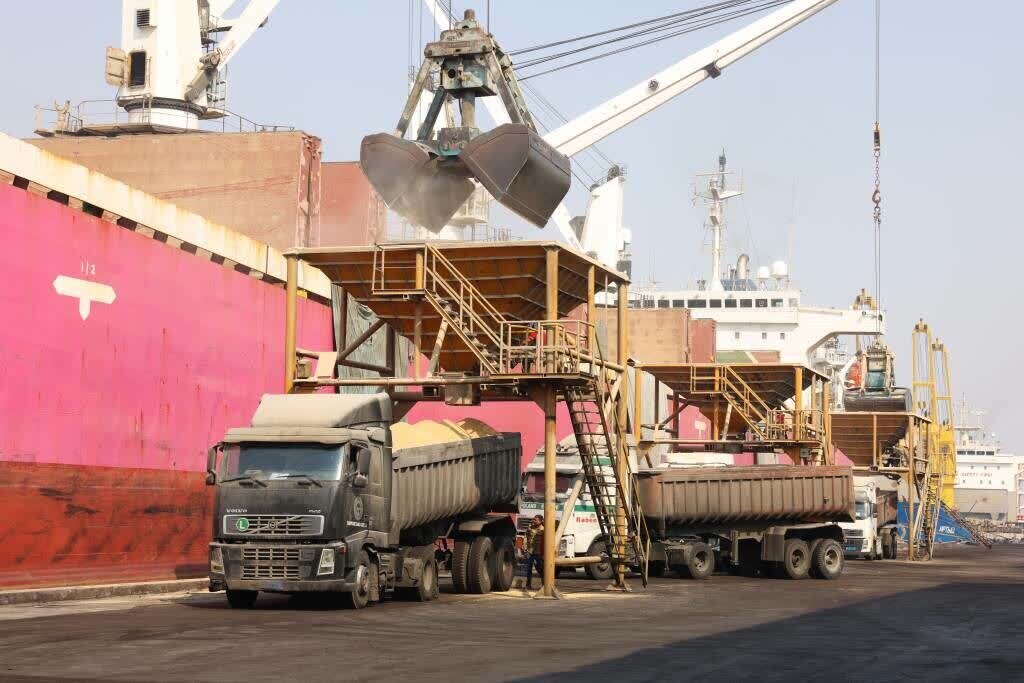Loading unloading of goods stand at 36m tons in Imam Khomeini port in 9 months
Loading, unloading of goods stand at 36m tons in Imam Khomeini port in 9 months
TEHRAN- As announced by a provincial official, 36 million tons of goods were loaded and unloaded in Imam Khomeini port, in Iran’s southwestern Khuzestan province, during the first nine months of the current Iranian calendar year (March 20- December 21, 2024).

Aboutaleb Geraylou, the director-general of the Ports and Maritime Department of Khuzestan province, said that Imam Khomeini port, as the largest commercial port in the province, accepted 1,112 vessels in the nine-month period.
As previously announced by Iran’s Ports and Maritime Organization (PMO), the country’s ports handled nearly 175 million tons of cargo in the first nine months of the present year.
During this period, 20.83 million tons of oil goods and 39.55 million tons of non-oil goods were unloaded, bringing total unloading operations to 60.38 million tons. Cargo loading operations included 58.84 million tons of oil goods and 55.77 million tons of non-oil goods, totaling 114.61 million tons, IRNA reported.
Combined loading and unloading operations amounted to 174.99 million tons, with 79.67 million tons of oil goods and 95.32 million tons of non-oil goods.
Additionally, Iran’s ports handled 2.33 million TEUs (twenty-foot equivalent units) of containers during this period, reflecting a 14 percent increase compared to 2.05 million TEUs in the same period last year.
The growth in container operations highlights increased efficiency and rising trade volumes at Iranian ports.
Iran’s ports have a total nominal capacity of over 260 million tons per year, allowing them to handle a wide range of oil and non-oil commodities. Key ports, such as Shahid Rajaei Port in Hormozgan Province, account for a significant portion of the country’s trade activity due to their advanced infrastructure and strategic location along international shipping routes.
Investments in port infrastructure have further enhanced the efficiency of loading and unloading operations, reducing turnaround times for vessels.
The PMO has emphasized the importance of increasing port capacity to accommodate growing trade volumes and support Iran’s economic development goals. Upgrades in equipment, digitalization of operations, and expanded storage facilities are part of ongoing efforts to optimize port efficiency.
Iran is one of the countries with a special status in trade and transit relations due to its strategic location and special geography, as the country is the passage of several important international corridors.
Considering its geographical location, Iran can play a significant role in the transit of goods in the region and benefit a lot from its status in this due.
While Iran is combating the U.S. unilateral sanctions on its economy, the country’s ports as the major gates of exports and imports play a significant role in this battle. This role makes all-out support to ports and more development of them serious and vital.
Such necessity has led the government to define projects for more development of the ports and also take some measures to encourage investment making in ports, in addition to facilitating the loading and unloading of goods, especially basic commodities, there.
It is worth mentioning that Iran’s Ports and Maritime Organization has defined a high number of projects to develop and improve the country’s ports, as the country aims to double the capacity of its ports in five years.
MA
source: tehrantimes.com